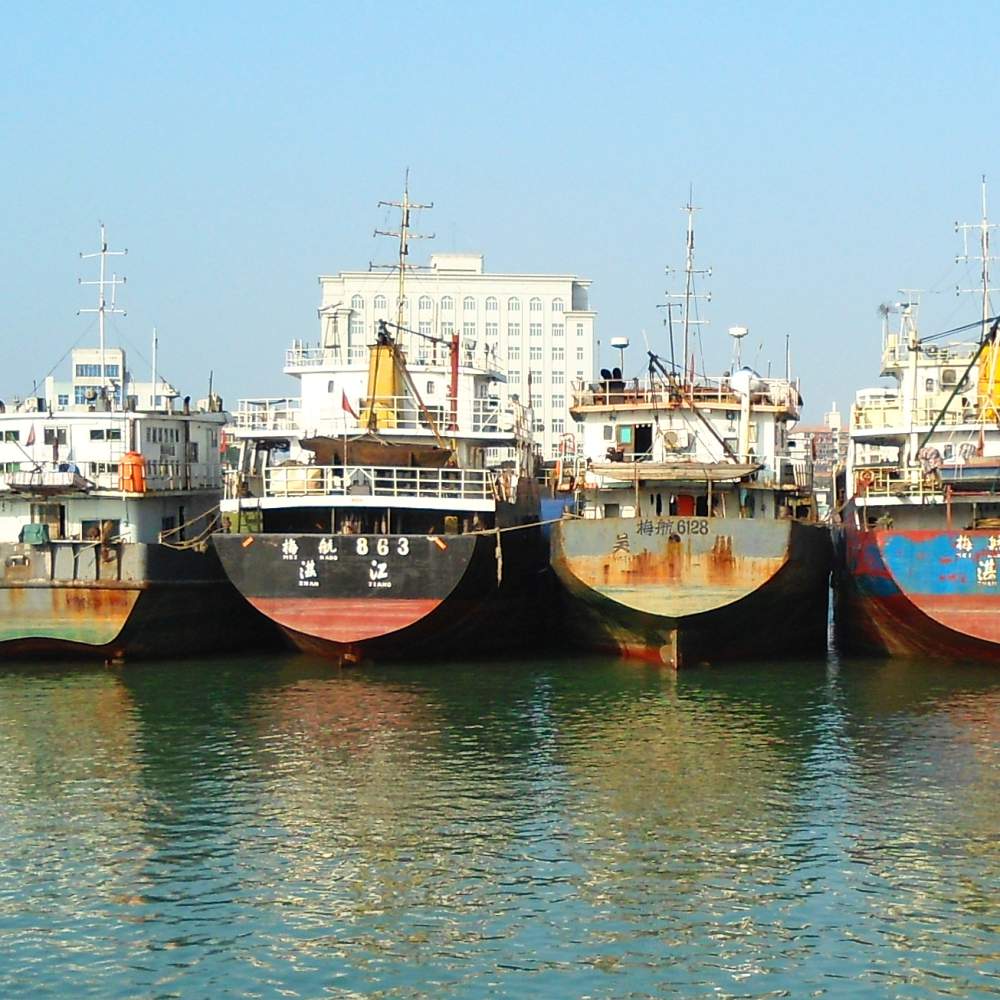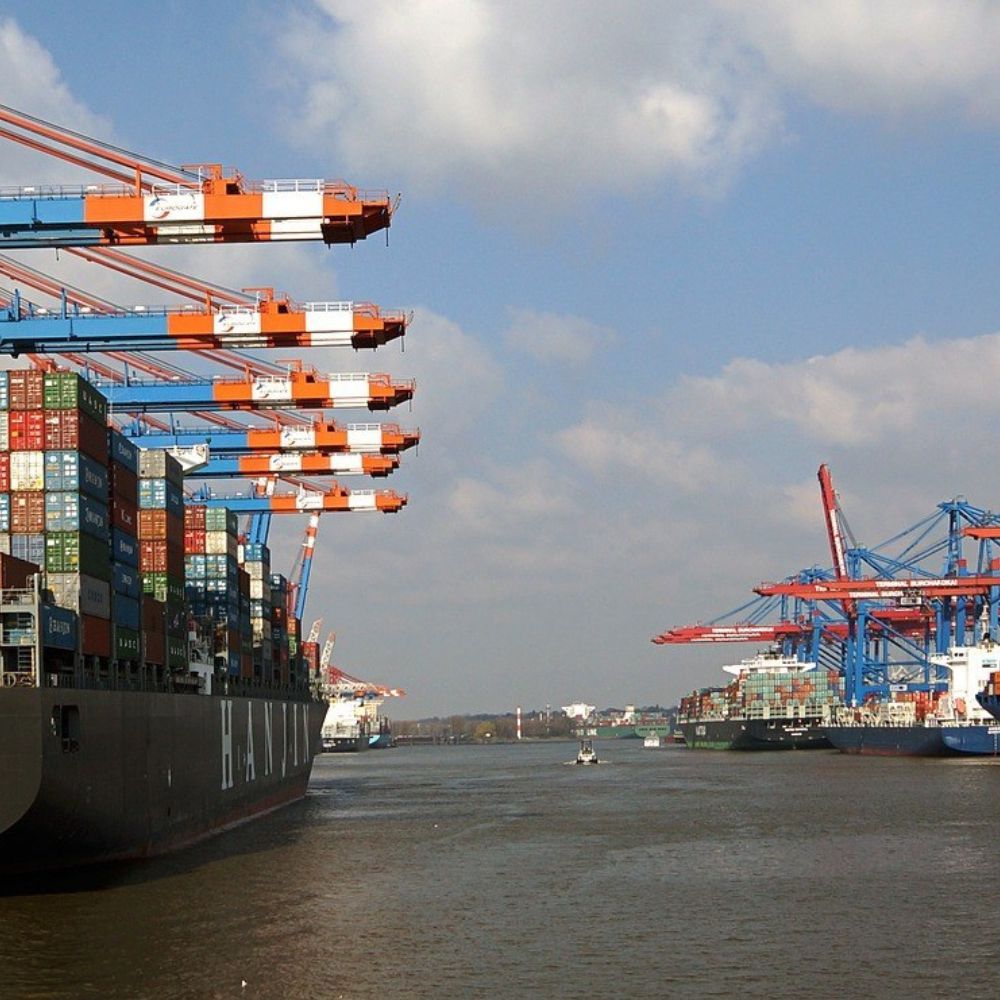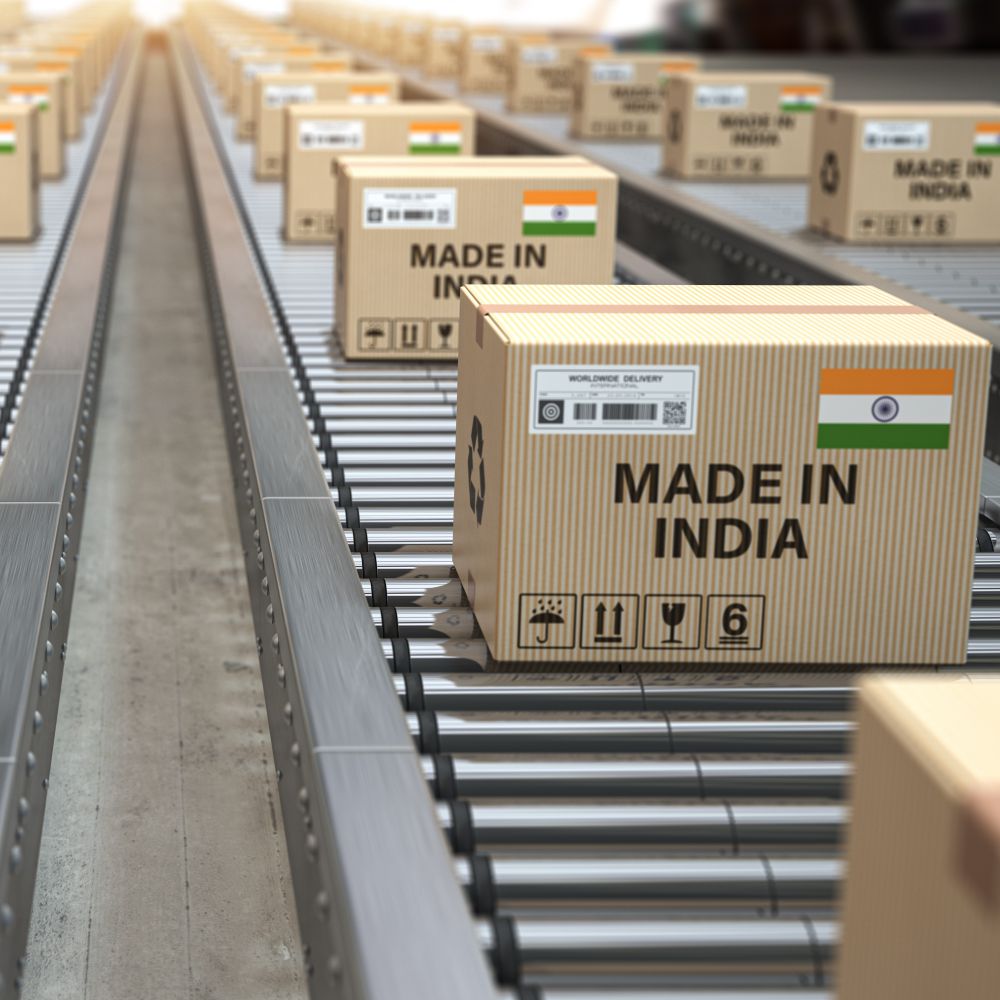Global supply chains have presumably faced the toughest of times since last 2.5 years. First it was braving the COVID-19 pandemic, which was later followed by global events such as Suez Canal blockage, Ukraine conflict, and China shutdown. While companies have been brave enough to fight these demons from time to time, but are we in a position to make our supply chains disruption-proof, yet? In extension to the ongoing developments, we reached out to supply chain leaders of companies and analysts for their analysis of the situation and how are they devising supply chain strategies for their respective organizations to tide the tumultuous times. Here’s what they said…
What has been the impact of the prolonged Covid-19 pandemic and other global events such as Ukraine –Russia war on supply chain matrix?
Yogesh Sarin, Director – Supply Chain South Asia Operations, Dell Technologies: Covid crippled the supply chain and then the war in Ukraine knocked it to its knees. The impact was sudden and widespread that did not leave many businesses unaffected. As an integral part of value chain, both within and across international borders, big disruption happened in businesses in getting products and services to customers. While pandemic led to shut down of borders with very limited transportation and travel, war paralyzed the commodity supplies.
Chandan Shirbhayye, AVP & Head —Supply Chain, Aragen Life Sciences: Pandemic started in early 2020 and by end of 2020, most of the supply chains had adapted to pandemic related challenges and have been able to mitigate the impact as compared to initial pandemic days. Certain unexpected global events such as Ukraine Conflict, Suez Canal blockage & China Shutdown impacted the recovery adversely. Crude prices, Domestic Currency Fluctuations & demand -supply imbalance has resulted in prices of some of the input materials escalating and increasing supply uncertainties. Supply chains with local dependency would be relatively less impacted but globally depended on supply chain would have faced cost & timelines impact.
Krishna Barad, Partner / Customs & International Trade, & Rohan Shah, Manager – IDT, BDO India LLP: Global supply chain matrix was already affected on account of COVID-19 pandemic. However, just when global supply chain was slowing starting to recover, Ukraine– Russia war has added further fuel to the fire. Due to war, there has been substantial surge in prices of oil and gas which is directly bound to affect supply chain matrix globally. Further, there has been considerable rise in air cargo and shipping line charges which has resulted into pressure on supply chain matrix globally. Further, Ukraine and Russia being global exporters of agricultural products, minerals, etc., have duly affected supply of the said products across the globe.
There have been major air & sea freight disruptions because of the same. What have been the challenges related to these?
Yogesh Sarin: These disruptions led to obstructions for international trade and transportation though differently across air, freight and sea sectors bringing a meta-uncertainty. Dead freight agreements with airlines had little significance since there were no flights in the Air. Lockdowns & war led to various shipping routes being cut, logistics firms suspending services and air freight rates skyrocketing. As a consequence, container availability, congestion at ports, custom clearance delays and crew crises became regular.
Chandan Shirbhayye: Most of the freight forwarders & 3PL logistics partners had already started factoring in Pandemic related costs in their workings as they had to implement lot of additional activities as compared to pre-pandemic circumstances. Added to it the capacity crunch, skewed demand & rerouting of network also resulted in lot of blank sailings, congestion at various points & non-availability of crews which further impacted the logistics operations. Increased Crude prices have resulted in fuel cost going up which compounded the cost challenges. Overall, this created uncertainty in terms of timelines and cost of logistics escalated to unprecedented levels.
Krishna Barad & Rohan Shah: Russia- Ukraine war has severely disrupted the air and sea freight across the globe. Several air and sea routes have been cut down due to which carriers are compelled to resort to longer routes than usual ones which has led to more spending on fuel and subsequently resulting into higher air and sea freight charges. Further many ports have shut down across globe due to war, resulting into congestion into ports and worsening the global supply chain.
What has been your short time strategy to work around these disruptions and what are the longterm implications and challenges?
Yogesh Sarin: Majority of us including our customers moved to ‘work from home ‘environment. Their primary tools of work had to be supported by us which in most cases became a lifeline for continuity of business. Digital engagement accelerated tremendously leading companies to adjust to it. Unforeseen events are to be always expected. The scale of the event might vary, but these incidents have ripple effects on supply chains and put the spotlight on the need for granular visibility and network design. There is an obvious learning to have systems in place that react to such events so as to reduce the impact and hasten recovery. May not be unique but simple options were effective. Alternate and multimodal routes worked well to keep stock moving. Even charter planes had to be deployed until some freighters were operational in limited zones. Customer expectations had to be reset to be more realistic to honor commitments. They had to redesign logistic processes with partners. It was never easy for partners to balance the care for staff health while simultaneously seeking permissions for operating sites including exception approvals during lockdown to serve critical essential customer deliveries for hospitals, basic government services and even stock exchange. Gratitude, respect & admiration for all our supply chain partners, for support during this crisis, elevated to a an unprecedent level.
Chandan Shirbhayye: We, at Aragen, had already embarked on journey of technology adaption in the last few years. Even during peak pandemic days, we were able to operate effectively due to digitalized and integrated processes. Employees have always been at core of Aragen values and due to various initiatives related to pandemic prevention as well care taken of affected employees during the pandemic days, we were able to have most of our employees contributing towards their responsibilities in engaged and efficient manner. We also have been driving lot of supply partner engagement programs, resulting in having a highly engaged partner base, which supported us during the pandemic and other disruptions. We were able to work on various risk mitigation initiatives such as alternate/new vendor development, backward/forward integration, long term contracts & also extended support to various needs of our partners proactively. We also collaborated with our peers in Industry for timely statutory approvals through joint representations to relevant authorities.
Supply chains will have (most of them already are in advanced stages) to consider risk also as a decisive factor with equal weightage as given to three elements of Triple Constraints /Iron Triangle (Cost, Delivery & Quality). Technology adaption has been a key driver and with AI/ML, we have to enable proactive decision making and deeper visibility within supply chain layers. People and supply partners will always remain crucial for success of any supply chain, so ensuring highly engaged and ready to perform People and Partner base through various Upskilling and Reskilling initiatives will have to be on agenda of supply chains. Lastly developing a local as well as circular supply chain to the extent possible can go long way in mitigating risk and uncertainty, with government being reciprocative and driving Atmanirbhar Bharat, this can be accelerated further.
What can be the best worked strategy to work around these disruptions and what are the long term implications and challenges?
Krishna Barad & Rohan Shah: Few of the best worked strategies around supply chain disruptions could be to identify alternate route for supply, identify alternative suppliers for urgently needed goods, building up inventory to address short term supply chain issues, invest in data and technology to identify gaps and keep update on recent developments, etc. However, uncertainty due to war is likely to end over time. At the same time, supply chain operations can be affected due to number of uncertain factors over the globe in future. It is imperative for global players to stay prepared to combat any challenges surrounding the supply chain in future. Flexibility and agility will be key in long run to navigate through supply chain resilience in future.
In your opinion, what are the three things that India should do to pick on the opportunity that these times and presumably some global superpowers’ policies have created for us globally.
Yogesh Sarin: To me, these are the three key aspects that India should possess:
- Manufacturing Hub: India has clear potential to be the manufacturing hub for the world. Focus needs to be on skilling workforce & public private partnerships
- Policy: Reducing trade barriers and offering more incentives like Production Linked Incentive (PLI) & semiconductor India program that aims at development of a sustainable semiconductor and display manufacturing ecosystem in India, would be a game changer.
- Embrace emerging technologies with focus on sustainability.
Chandan Shirbhayye: We believe, many industries across the world are considering India in their mitigation strategy to address the risk arising due to various global developments and even the government has been extending necessary support to industry. Some of the initiatives, which will improve Indian industry performance, such as GST, LEEP (Logistics Efficiency Enhancement Program), NSWS (National Single Window System), PLI (Production Linked Incentives), RoDTEP (Remissions of Duties and Taxes on Exported Products), SWIFT (Single Window Interface for Facilitating Trade), AEO (Authorized Economic Operator), Faceless Assessment, Digital India, Start-up India and many more schemes are already being driven by Government of India in partnership with Industry. India has already been global exporter for agricultural Items, ITeS, Pharma/ Life Sciences and gradually improving on other areas such as electronics, automobiles, etc. We need to tap into innovative and value-adding solutions across Industry that are adaptable across the world rather than providing only basic solutions.
India has huge potential and Industry will have to take the lead and partner with government in ensuring that we convert this opportunity into economic growth. We have improved a lot on Ease of Doing Business rankings due to various initiatives taken and placed India as preferred destination for Businesses. To precisely mention three areas, we need to continue to drive the improvements in below areas, which will help India to gain the logistics/supply chain leadership globally…
- Upgradation of infrastructure (Power, Logistics connectivity, etc.) including Digital Infrastructure across India to have uniform growth opportunities
- Simplification, rationalization & integration of compliances between various statutory and regulatory bodies of states as well as ministries
- Industry Ready Talent availability across the industries and levels. We have young population, which can be a big booster for Industry, but most of them are not Industry ready or concentrated in Industrial Hubs only.
Krishna Barad & Rohan Shah: India should try to pick up untapped markets in global exports, boost ties and relations with other countries and make right kinds of policies and reforms for increasing FDI.
What are the pluses and minuses that are in India’s favor to gain the logistics / supply chain leadership globally?
Yogesh Sarin: The merits that are in India’s favor include stable economy, business reforms favoring Foreign Direct investments and a huge consumer base. On the other hand, there are demerits as well, which include ease of doing business that can be better. We still have high tariffs. Lastly, we still have miles to go in terms of infrastructure development to strengthen our supply chain supremacy.
Krishna Barad & Rohan Shah: As global supply chain stands hampered due to COVID-19 pandemic and Russia-Ukraine war, India can use this opportunity to be a preferred business destination. Diverse corporate environment, skilled, inexpensive labour can contribute to the country’s emergence as an international supply chain hub. However, some existing bottlenecks such as poor infrastructure, regulatory hurdles, logistical delays, etc., are preventing India from becoming a trusted supply chain leader globally.
EDITOR'S NOTE
Plus ONE Strategy – A Silver lining for Indian Supply Chain?
While Covid-19 had already put enough spotlight on our dear neighbour China, the prolonged supply chain derailment, has further amplified the importance of Plus One strategy for countries who have, for decades, been dependent on Chinese home-ground for manufacturing & trading purposes. Since the start of Covid-19 pandemic, global companies have been contemplating on finding a trusted alternative for business & EXIM. While these might be challenging times, India can successfully stake its claim as the prefect AIDE to global companies who are scouting for a promising manufacturing hub having seamless supply chain network. Is it any EASY task for India? Definitely not… but the telling signs are quite promising for us.
Since more than 2.5 years, global companies who were highly dependent on China for their manufacturing & trade requirements, are on the lookout for alternative countries that can offer them – Ease of Doing Business, Global Trade Connect and a huge Regional Market Access (3-pronged agenda). While countries like Vietnam and Bangladesh might have grabbed the eyeballs on the first two points, India stands to score the highest in the last and the biggest point of a Huge Regional Market Access. In the last two years, we have seen global leaders like Samsung and Apple setting up manufacturing base in the country. This is not all… the existing giants in the country such as IBM, DHL and some semiconductor companies are prepping for the expansion and are in constant dialogue with the government officials for a smooth expansion roll-out.
While this is the corporate side of the story, if the recent news is anywhere to go by, then the Central Government is already working on a strategy to emphasize on the above mentioned 3-pronged agenda to become the preferred business destination. In fact, the Department-related Parliamentary Standing Committee on Commerce recently suggested the Central Government leverage the ‘China Plus One Strategy’ for making India an alternative investment destination for major global companies that intend to substitute their China-dependent supply chains. The growing preference of companies located in major economies of Europe and the US to shift to other manufacturing bases than China provides a window of opportunity for India’s trade sector, which needs to be capitalized, suggested the committee in its 167th Report on Demands for Grants (2022-23) of Department of Commerce, Ministry of Commerce, and Industry.
The Committee, headed by Rajya Sabha MP and YSRCP leader V Vijayasai Reddy, recommended that a policy measure to benefit from the strategy should be ‘devised, which should incorporate steps to ensure a business-friendly environment and best-in-class manufacturing infrastructure for the incoming investments. It further recommends that the government should endeavour to pursue “Free or Preferential Trade Agreements” or an interim and mini-trade agreement with countries that seek to invest in India under the ‘China Plus One’ strategy.

Categories

Magazine Editions






















